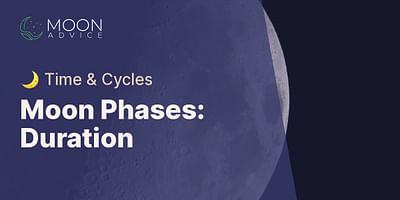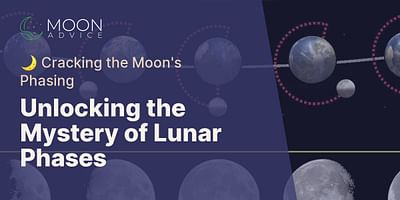Howard Wintheiser is a renowned author and speaker specializing in lunar psychology and its impact on decision-making. Holding a Master's degree in Psychology, he utilizes his deep insights into the human psyche to interpret the moon's influence. Howard's work is widely recognized for its practicality and relevance in day-to-day life.
Dear reader,
Thank you for reaching out with such an intriguing question about the scientific explanation for the phases of the moon. Understanding the phases of the moon is not only fascinating but also holds great significance in our lives. So, let's dive into the science behind it!
The phases of the moon are a result of the interplay between the sun, the moon, and the Earth. As the moon orbits around our planet, different portions of its surface are illuminated by the sun, creating the various phases we observe from Earth.
To grasp this concept, let's start with the New Moon phase. During this phase, the moon is positioned between the Earth and the sun. The side of the moon facing us is not illuminated, making it appear completely dark. As the moon continues its orbit, we move into the Waxing Crescent phase. At this point, a small sliver of the moon becomes visible as sunlight starts to illuminate a small portion of its surface.
The next phase is the First Quarter Moon. During this phase, half of the moon's surface is illuminated, giving us the appearance of a half-moon shape. As the moon continues its journey, we enter the Waxing Gibbous phase. In this phase, more than half of the moon is illuminated, and it appears to be growing in size.
Finally, we reach the Full Moon phase. At this point, the moon is directly opposite the sun, with its entire surface facing us fully illuminated. It's a breathtaking sight that has captivated humans for centuries. After the Full Moon, we move into the Waning Gibbous phase, where the illuminated portion of the moon starts to decrease.
Next, we have the Third Quarter Moon. During this phase, half of the moon's surface is illuminated, but it appears as a different half compared to the First Quarter Moon. As the moon continues its orbit, we enter the Waning Crescent phase. In this phase, only a small sliver of the moon is visible as it approaches the New Moon phase once again, completing the lunar cycle.
The scientific explanation for these phases lies in the relative positions of the sun, the moon, and the Earth. The moon does not emit its own light; instead, it reflects sunlight. As the moon orbits around the Earth, the angle between the sun, moon, and Earth changes, causing different portions of the moon to be illuminated.
The moon's phases occur because of the moon's position in relation to the sun and the Earth. When the moon is between the Earth and the sun, we see the New Moon phase. When the moon is on the opposite side of the Earth from the sun, we see the Full Moon phase. The Waxing and Waning Crescent and Gibbous phases occur as the moon transitions between these positions.
Understanding the scientific explanation behind the phases of the moon allows us to appreciate the beauty and wonder of our celestial companion. It also helps us navigate our emotions, relationships, and decisions based on lunar wisdom. By aligning ourselves with the energy of each phase, we can harness the moon's influence to enhance our lives.
I hope this explanation has shed some light on the scientific basis for the phases of the moon. If you have any further questions or need more guidance on understanding moon phases, feel free to explore our comprehensive articles and insights on Moon Advice.
Wishing you a harmonious journey under the moon's gentle guidance.
With lunar wisdom,
Orion Starfield















